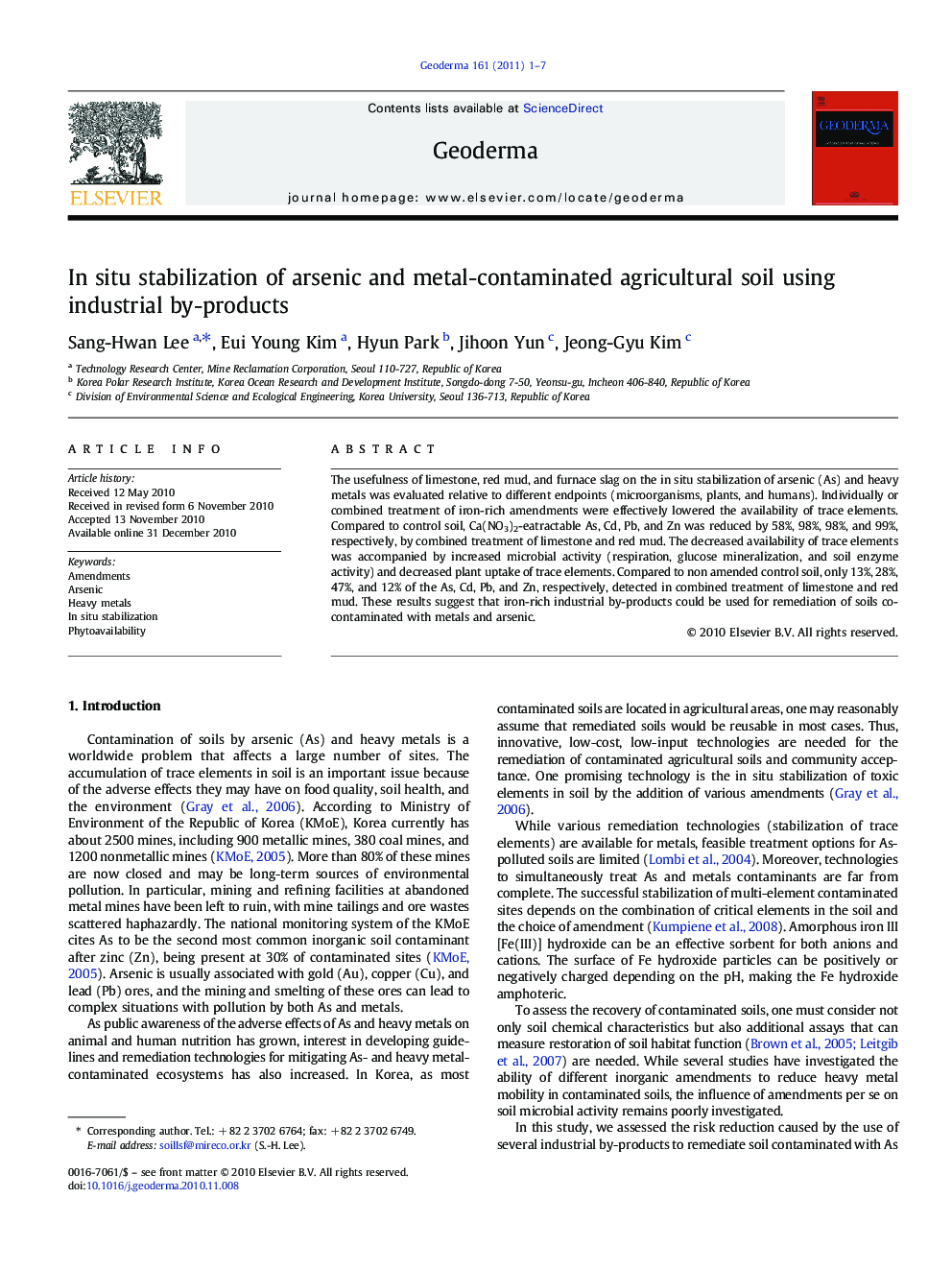| Article ID | Journal | Published Year | Pages | File Type |
|---|---|---|---|---|
| 4574228 | Geoderma | 2011 | 7 Pages |
The usefulness of limestone, red mud, and furnace slag on the in situ stabilization of arsenic (As) and heavy metals was evaluated relative to different endpoints (microorganisms, plants, and humans). Individually or combined treatment of iron-rich amendments were effectively lowered the availability of trace elements. Compared to control soil, Ca(NO3)2-eatractable As, Cd, Pb, and Zn was reduced by 58%, 98%, 98%, and 99%, respectively, by combined treatment of limestone and red mud. The decreased availability of trace elements was accompanied by increased microbial activity (respiration, glucose mineralization, and soil enzyme activity) and decreased plant uptake of trace elements. Compared to non amended control soil, only 13%, 28%, 47%, and 12% of the As, Cd, Pb, and Zn, respectively, detected in combined treatment of limestone and red mud. These results suggest that iron-rich industrial by-products could be used for remediation of soils co-contaminated with metals and arsenic.
Research Highlights► We assessed the ability of several industrial byproducts (limestone, red mud, and furnace slag) to reduce the availability of arsenic and heavy metals in soil and evaluated the response of biological indicators to the soil amendments. ► Fe-rich amendments that can immobilize As and heavy metals in situ may provide a cost-effective and sustainable solution for the remediation of contaminated soils. ► The use of combined chemical and biological monitoring to gain greater insight into the effects of arsenic and heavy metals in soil ecosystems.
